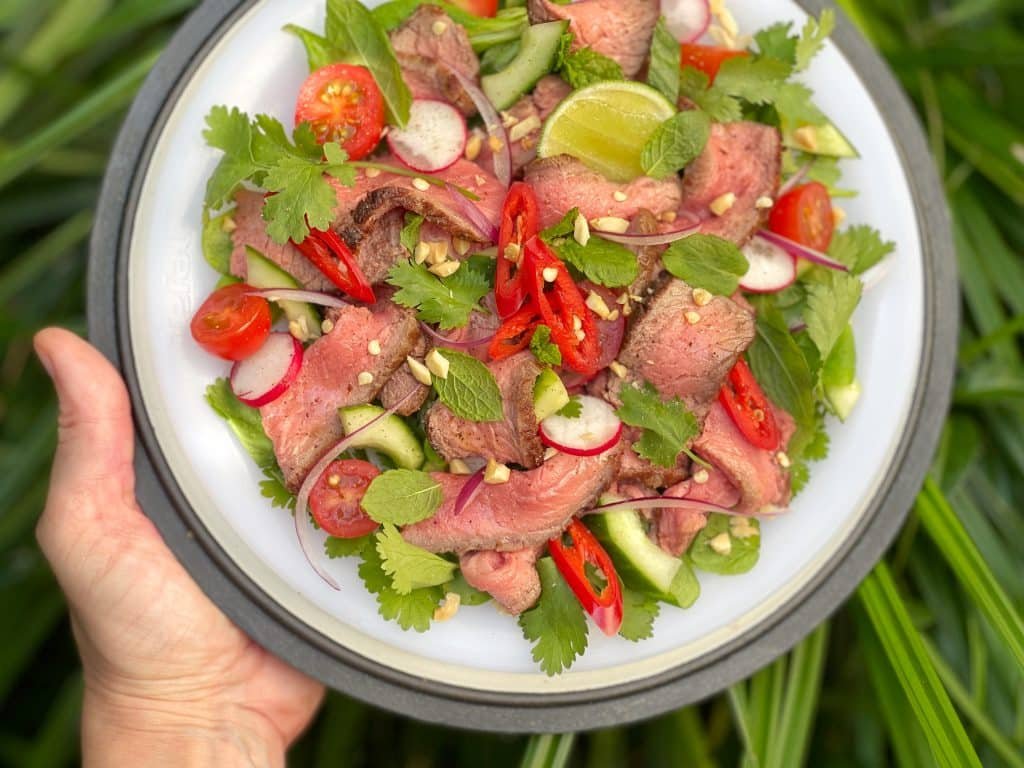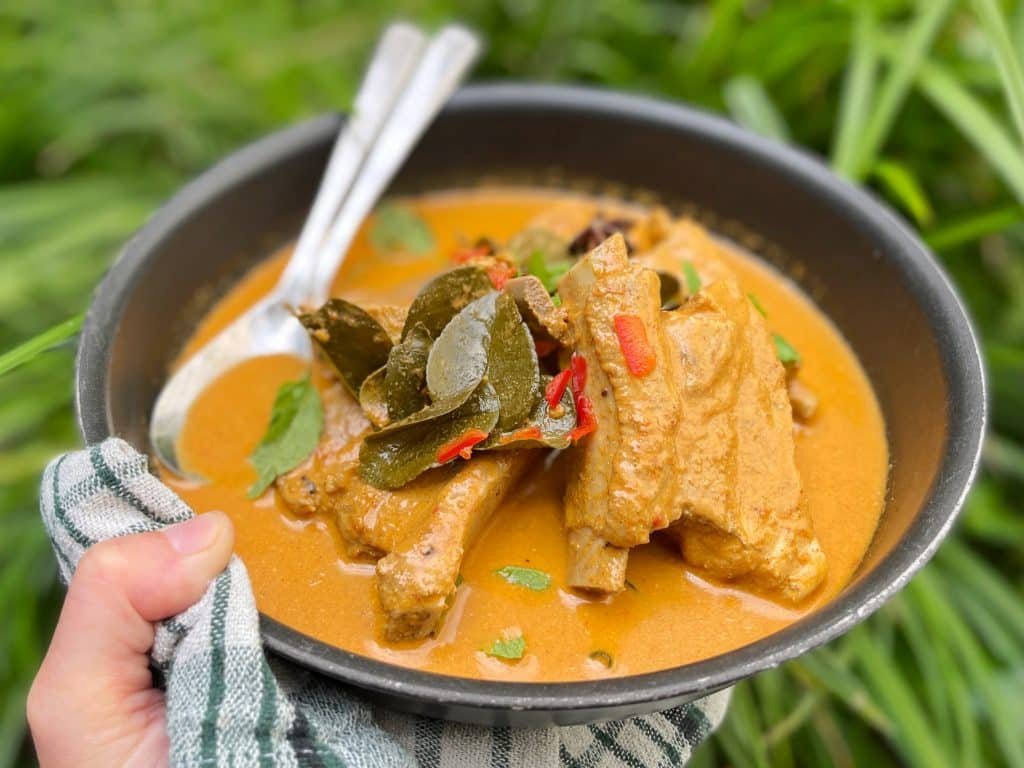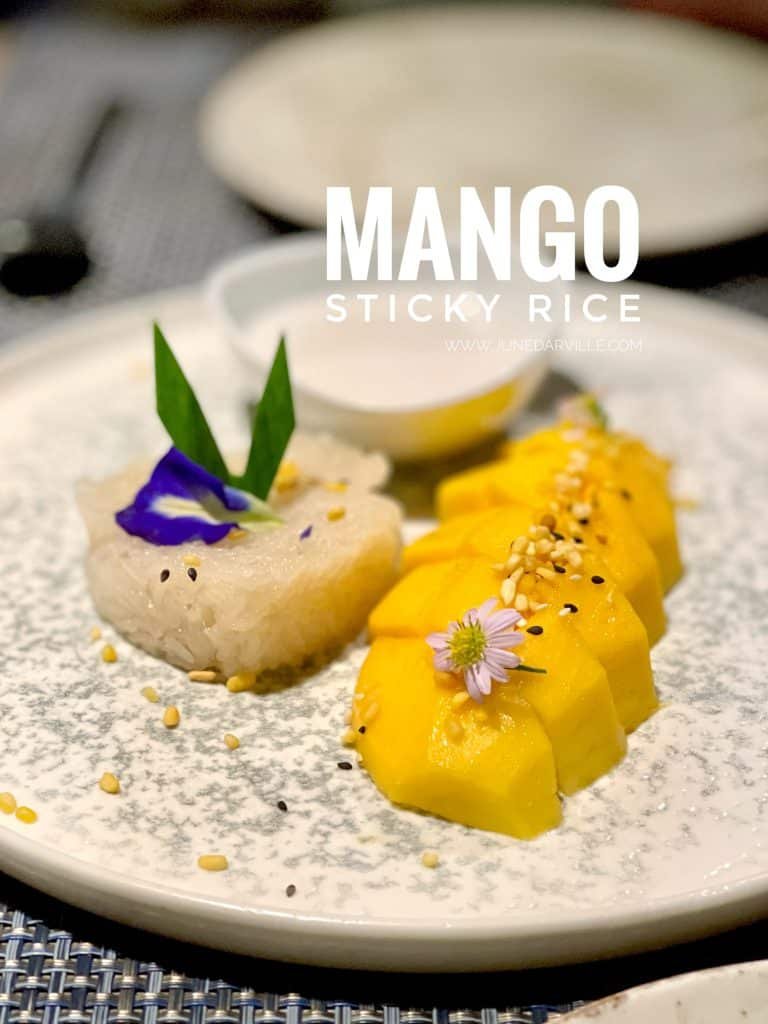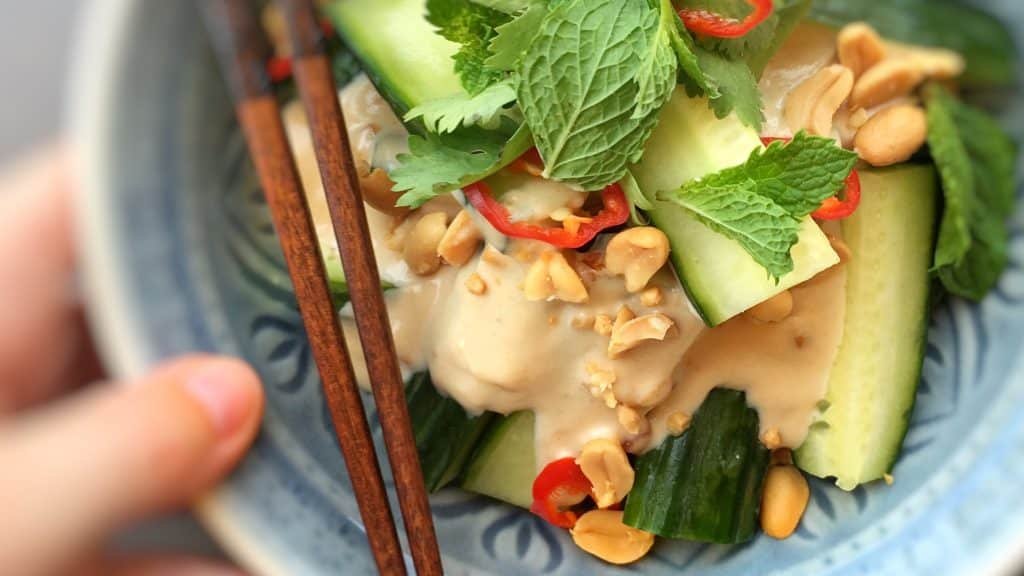Do you like cooking Asian food?
Then you can definitely use these 5 tips for cooking Thai at home!
Perhaps you like cooking Thai at home from time to time?
Same here. But that hasn’t always been the case. For a long time we wondered why our tom ka gai, vegetable wok and red chicken curry didn’t taste like over there during our trip in Thailand.
Our dishes were clearly missing something, but what?
Classic Thai cooking ingredients and condiments are garlic, fish sauce, chili pepper, mint, tamarind and lime… So what was it?
Well we found that out when we decided to take a cooking class in Chiang Mai.
Is cooking Thai difficult?
Cooking Thai food can be as simple or as complex as you make it – or want to make it.
The key to Thai cuisine lies in balancing flavors—sweet, sour, salty, and spicy. While some dishes might require a variety of ingredients and specific techniques, there are plenty of delicious Thai recipes that are straightforward and easy to follow.
The most important thing is to have fresh ingredients and the right spices, such as lemongrass, Thai basil and fish sauce.
With a bit of practice, patience and our tips for cooking Thai, you will find that cooking Thai food can be an enjoyable and rewarding experience.

So here are 5 tips for cooking Thai at home that I picked up there!
5 tips for cooking Thai at home
1. Sugar
So what is for us THE biggest beginner’s mistake we used to make?
Even though we read in Thai recipes that sugar was necessary, we didn’t add it to our dishes. Adding sugar to savory dishes always made us cringe.
But we were wrong.
Do you like pad thai noodles?
Sugar is actually the main ingredient in this heavenly noodle stir fry, palm sugar to be more specific. In addition to other classic Thai cooking ingredients and condiments such as garlic, fish sauce, chili pepper, mint, tamarind and lime, sugar is THE most important flavor enhancer in Thai dishes.
You can find palm sugar in Asian grocery stores. Let it dissolve in a little water or marinade, chop it up roughly or simply grate it.
Adding sugar to food… one of the most important tips for cooking Thai we learned in Thailand!
No palm sugar? Then use brown sugar as a substitute instead.
2. Broth
You won’t see butter or lard in Thai cuisine often.
At most some cooking oil to grease a wok or to give meat a quick color.
But how do you get your ingredients tender?
Gradually add broth or a splash of water and stir regularly.
As a result, your dish will be both cooked and steamed, without being too greasy.

3. Coconut milk vs coconut cream
Another good tips for cooking Thai…
Do you like creamy curries?
Replace half of the coconut milk with coconut cream (you can freeze the rest of the unused coconut milk for later).
Coconut milk contains more water than coconut cream. This weakens the coconut flavor in dishes and makes the consistency of your beautiful curry sauce watery.
If you open a can of coconut cream, it will be very thick. Don’t panic, once heated it will become liquid again.
Coconut cream is also used in desserts such as the classic Thai mango with sticky rice.
Or coconut ice cream.

4. Mint
Thai fresh herbs?
You would immediately think of fresh cilantro, right.
However one of the most commonly used herbs in Thai dishes is actually fresh mint. Fresh cilantro is also used, but more in cold preparations such as spicy Thai (beef) salads, and mainly in combination with fresh mint.
Coriander roots and stalks end up in a mortar to make fresh curry pastes.
Another herb that you can add to Thai hot or cold dishes is Thai basil.
Extra tip: serve fresh mint raw and in a separate bowl next to your dish.
This keeps the taste and crunch at its best.
And if we are looking for another fresh herb to use in our Thai home cooked meals that isn’t mint for a change, then we usually use Thai holy basil.

5. Crunchy vegetables
And last but not least in our collection of tips for cooking Thai…
Keep vegetables crunchy, so don’t add them too early to a wok or curry sauce.
This keeps the pak choi from overcooking completely flat before the carrots are tender. Vegetables that take longer to cook are green beans, cauliflower, broccoli and carrots.
Add vegetables that soften quickly just before serving, such as bean sprouts, bell peppers, green peas, mushrooms and zucchini.
Sprinkle fresh mint and coarsely chopped peanuts on your vegetable dish for extra crunch and flavor.

How about you?
Did you think these tips for cooking Thai were helpful?
Do you have other tips for cooking Thai at home?
Let us know in the comments below!
We’d love to hear from you.